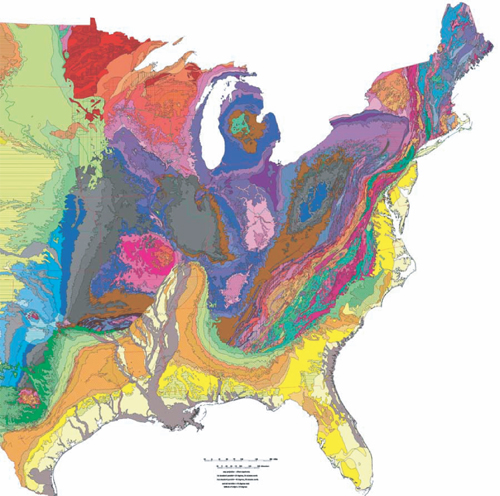Northern Embayment Lithospere Experiment (NELE) Abstract
Abstract
Passage of the EarthScope Transportable Array across the Mississippi Embayment is providing an opportunity to investigate lithospheric structure associated with active deformation and an ancient, intracratonic rift. The Mississippi Embayment is a first-order geological structure of the North American continent with a long and complex geological history affected by at least two periods of continental breakup. The reason for geologically recent basin subsidence is enigmatic since subsidence began in Late Cretaceous and is not linked to a major tectonic episode. In addition, the active New Madrid seismic zone (NMSZ) is located in the upper crust within the northern Mississippi Embayment. Lithospheric seismic velocity heterogeneity and anisotropy are likely indicators of the dynamic processes associated with basin subsidence and earthquake genesis in the region.

The seismic experiment incorporates stations of the USArray and a portable FlexArray deployment to provide an overall framework of lithospheric velocity and anisotropy structure to depths including the upper mantle transition zone. Detailed variations in deep structure perpendicular and parallel to the embayment axis are imaged using three dense lines of FlexArray stations that extend within and outside of the Mississippi Embayment.
Major issues that are addressed include:
- the primary differences in lithospheric structure between the embayment and the surrounding region
- the nature of early Cambrian rifting and relationship to pre-existing structure
- the dynamic processes responsible for basin subsidence, and
- the relationship of the NMSZ to large scale lithospheric structure.
This is accomplished through joint interpretation of compressional and shear velocity tomography, potential fields, transfer/receiver functions, and depth-dependent anisotropy images generated using traditional and new geophysical techniques.
